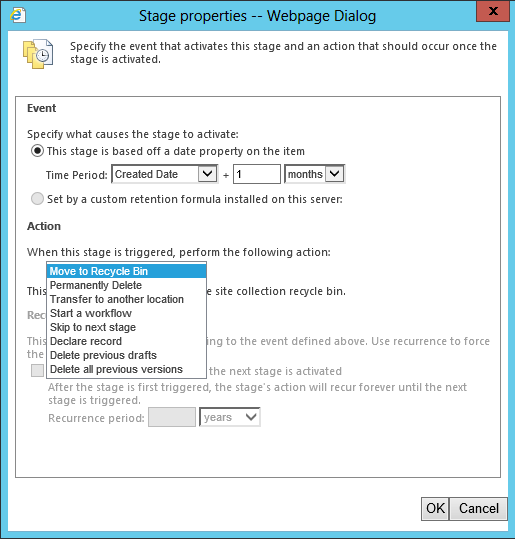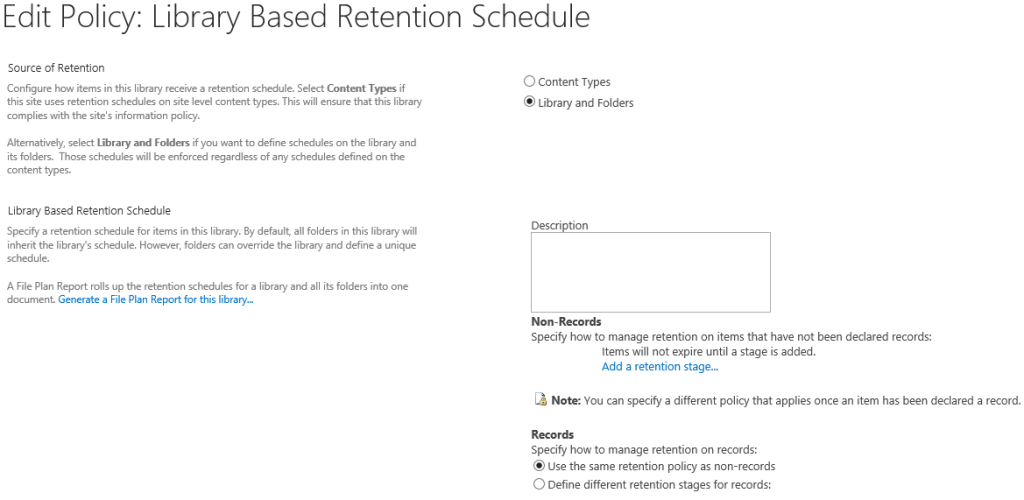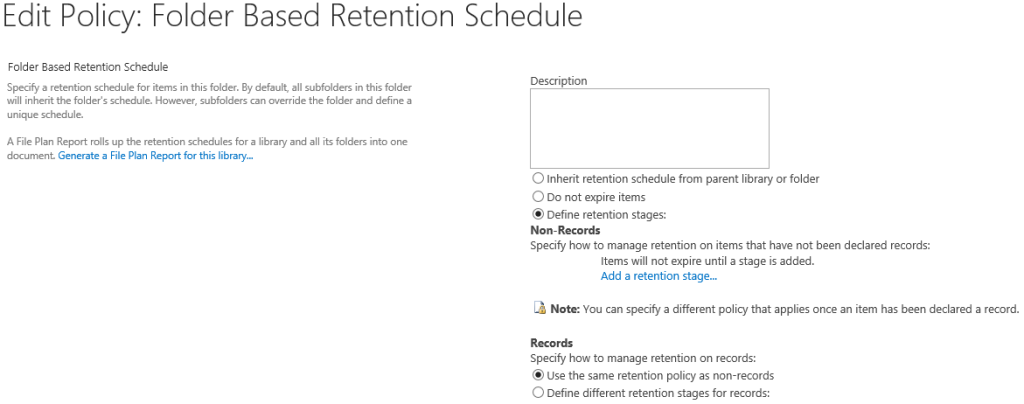
Retention Policy in SharePoint 2013
- Processes, standards and quality
- Technologies
- Others
Generally speaking, a retention policy is a set of rules that defines the transfer of content from one location to another. For example, if I get a bill by e-mail, I print it and put it on a table until I pay it. When I do this, I put the bill into a small box in my drawer. At the end of the year I put the box in my garage. After a few years I burn the box, because the bills in it are no longer of use to me. Burning the box corresponds to retention, and all the rules that concern transferring the content to another location to retention policy.
What is this for?
This kind of policy is extremely important for organization, because transferring the content to another location significantly reduces the cost of its storage. Besides, it makes it more private and less detectable.
Retention Policy available in SharePoint 2010
In SharePoint 2010 we have already the retention policy, which can be used for:
- Content Type,
- Lists or Libraries (it requires activating feature at a level of Site Collection Library and Folder Based Retention).
Possible actions of retention stage:
- Move to Recycle Bin,
- Permanent Delete,
- Transfer to another location,
- Start a workflow,
- Skip to next stage,
- Declare record,
- Delete previous drafts,
- Delete all previous versions.
Usage of retention policy available in SharePoint 2010
The following examples are possible solutions to the problems that have emerged in the project I took part in.
Example 1
In the project we had Complaint Report type elements. Due to the fact that their number was increasing very fast, we were familiar with query throttling. To solve this problem you could, for example, set a policy, in which elements that haven’t been modified for a long time, were transferred to other locations (default fields are Created Date or a moment of declaring the element as a record so when it comes to modifying, it would be necessary to create custom formula – Custom Expiration Formula).
Example 2
The application user could create documents in the Word and assign them to Complaint Report. But that the document was recognized as valid, it had to be saved. Otherwise the document was considered as invalid (draft). We could set a policy here that some time after creating document it would remove all drafts.
If you aren’t satisfied with assigning policy to a content type, you can assign it to a specific list or library (to which no more than one content type is assigned). To do this go to list or library settings, then the policy settings and change content type source to list or library. A good thing about this feature is that on the list or library, you can create a folder and assign to it the same policy as a list or library (inherited) or discontinue this policy and assign a new one to the folder.
New in SharePoint 2013
In addition to the features available in the 2010, SharePoint 2013 also provides Site Retention, which enables us to remove, close or close and then remove the site. Below you can find print screens from creating new site.
After creating the policy it is necessary to administer it on the site.
References:
Malik S.,Microsoft SharePoint 2010: Building Solutions for SharePoint 2010, Apress, 2010.





